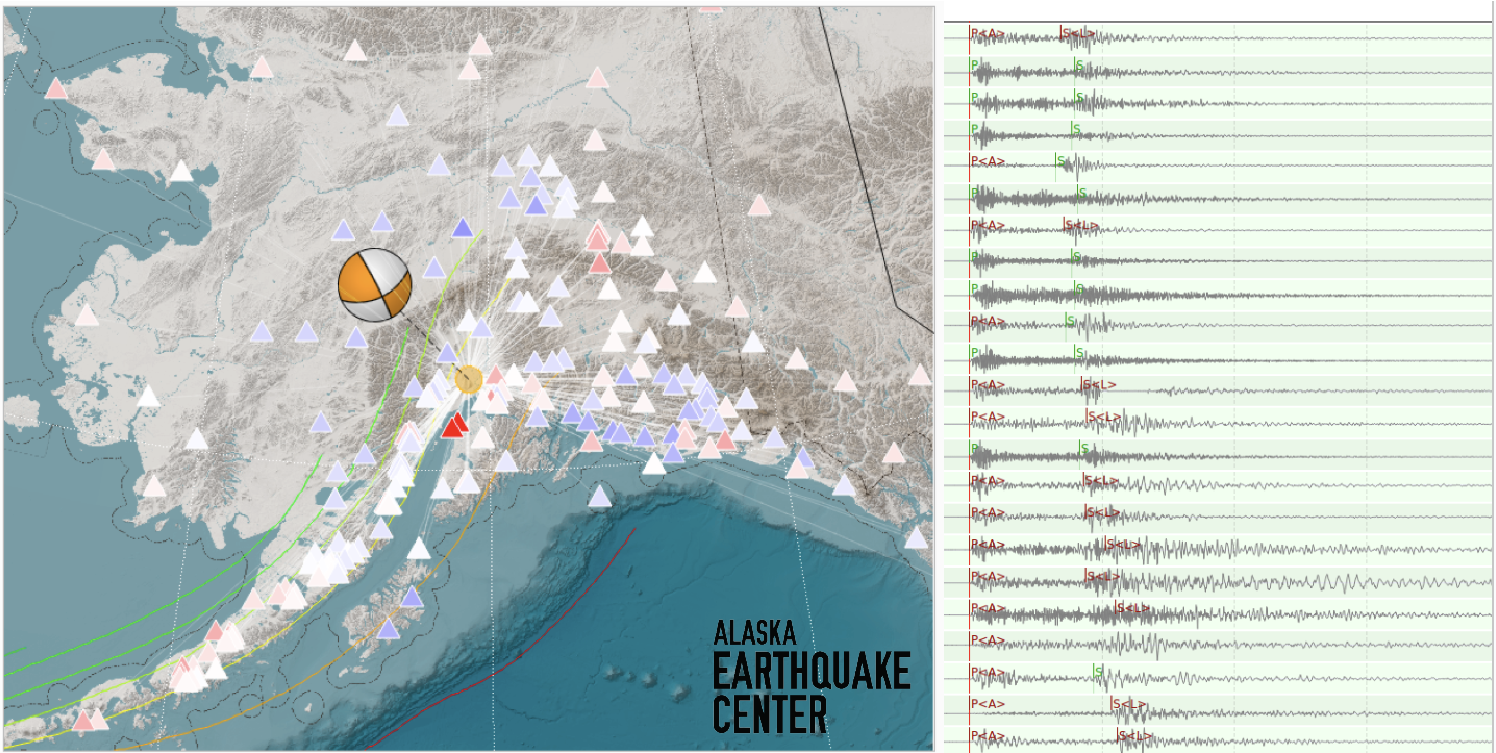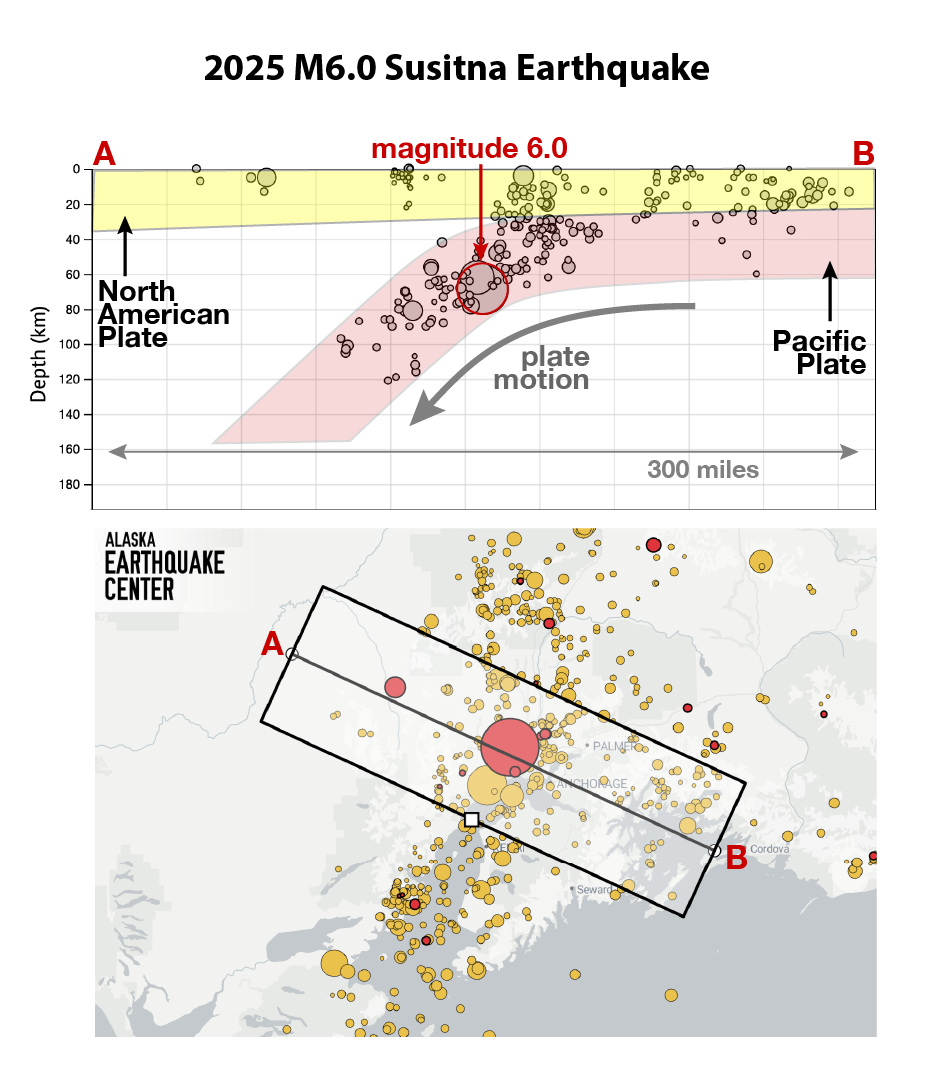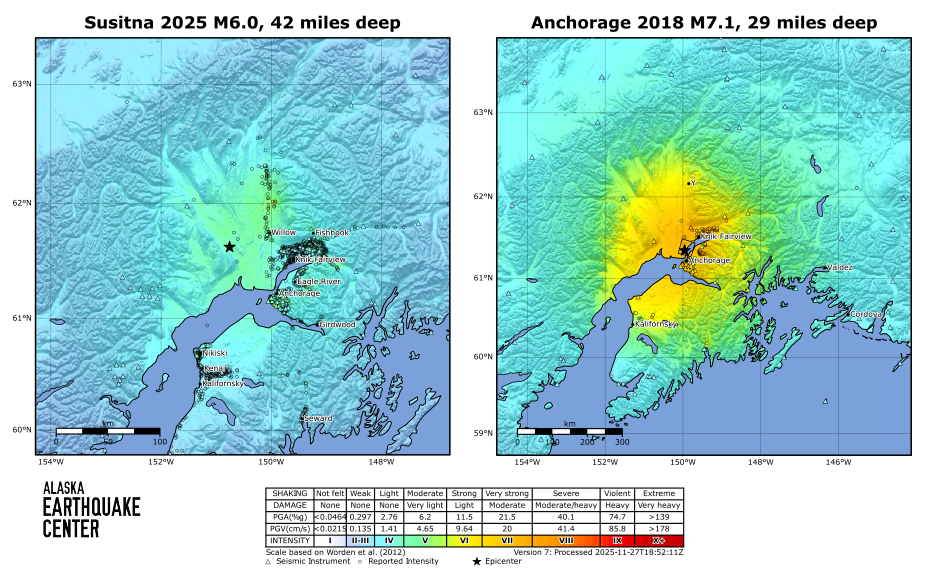A magnitude 6.0 earthquake beneath Susitna, Alaska, was felt by thousands of Alaskans at about 8:12 am on Thanksgiving morning. Reports from Homer to Valdez and north to Fairbanks came from residents who were shaken awake. Our new Gen3 detection system quickly calculated the size and location (reviewed by our duty seismologist!) and produced more detailed information, such as the focal mechanism, within minutes (Figure 1). Because of the earthquake’s depth (about 40 mi, or 70 km—Figure 2), even those closest to the epicenter reported minimal damage like small cracks in drywall and photos jiggled off-kilter.
Many have asked if this was an aftershock of the November 30, 2018 M7.1 Anchorage Earthquake. This morning’s event fell outside the aftershock region of that earthquake (Figures 3 & 4). The Susitna quake likely occurred within the subducting Pacific Plate as it moves beneath the North American Plate (Figure 2). This type of earthquake is relatively common within southern Alaska (check out our recent radio segment about it.)
There have been aftershocks (the largest a magnitude 3.2 as of this writing), and we expect aftershocks in the area to be most common within the next few weeks. The U.S. Geological Survey aftershock forecast for the region suggests about a 25% chance of a magnitude 5 earthquake in the coming week.
How strongly was shaking felt? This is reported with the intensity scale, and the Sustina event was at a shaking intensity of V, according to USGS “Did you feel it?” responses. Consistent with reports, damage for this level of shaking is generally light to very light. Locations farther from the epicenter, like Nikiski (station CAPN) and Anchorage (station K220) felt the earthquake for longer and stronger (Figure 5). This is because they are in Cook Inlet Basin, and sedimentary basins trap seismic waves and enhance shaking.
While the proximity to the anniversary of the 2018 Anchorage Earthquake seems notable, there is no time of year when deep earthquakes are more likely to occur, and the late November timing of this earthquake is merely an interesting coincidence. Additionally, the type of earthquake was quite different, with this morning’s event resulting from lateral slip within the subducting plate, while the 2018 Anchorage event resulting from the typical thrusting motion of the Pacific Plate (Figure 3).











